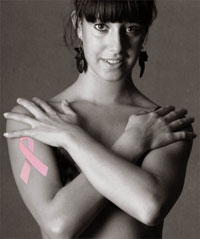
If you aren’t a fan of cause-marketing, you might look around you this month and reconsider. How many pink ribbons do you see?
That’s the power of cause marketing. Organizations from Yoplait to the Susan G. Komen Run for the Cure are sending a message everyone instantly recognizes: that pink loop of ribbon means both donate and get a breast exam.
Some question the merit of the pink-ribbon campaign on several grounds: The companies profit, sometimes more than the nonprofits for whom funds are being raised, and awareness of the need for a check-up is less important that awareness of the causes of cancer.
While I’d like to see cancer research and support programs for women with cancer get a bigger portion of the donations, I don’t think that for-profit companies making a profit is a reason to disdain the pink ribbon campaign.
Cause marketing is about for-profits making a profit by being associated with a nonprofit. A cause-marketing campaign is not a charitable donation by the business. And the benefits to the nonprofit are not only financial. In some cases, such as breast cancer, advocacy and awareness are major goals. I’ve given a number of free webinars on cause marketing and they’re still available.
The pink ribbon movement has sparked all sorts of product tie-ins, from flower arrangements to necklaces to clothes. It has given rise to chapters of breast-cancer groups in cities around the nation. In other words, the pink ribbon symbol leverages the work of nonprofits beyond any single organization’s wildest dreams. We may need to demand more transparency to prevent “pink-washing.”
Yes, I’d also like the cause of cancer, as well as the cure, to be found and people made aware of what they need to do to avoid getting cancer. It would be a good thing if more cause-of-cancer awareness was part of the campaigns as well. But that doesn’t mean that awareness of getting a check-up, support for people with cancer, and finding a cure are less important.
No telling how many lives are saved each year because that pink ribbon nudged a woman to her doctor. That’s an impact no one can measure.
So go get your check-up. Do your breast self-exam. Be part of the unmeasureable outcome of cause marketing.
How do you think cause-marketing campaigns can be improved?
